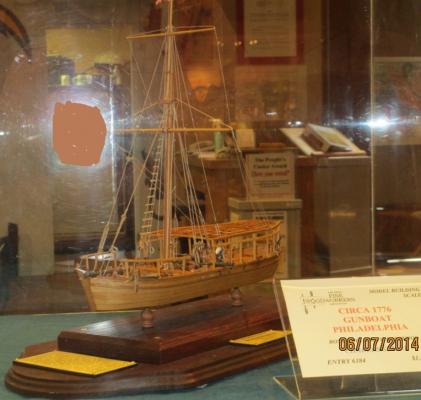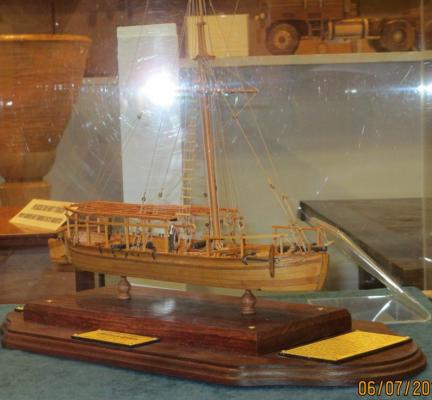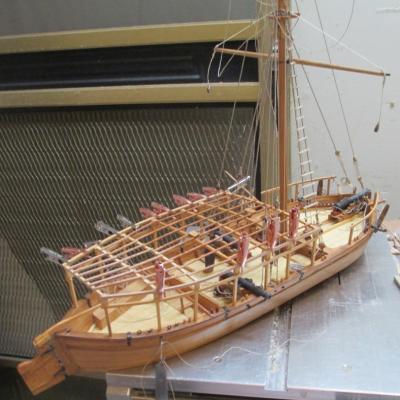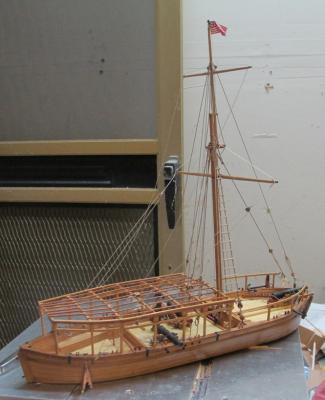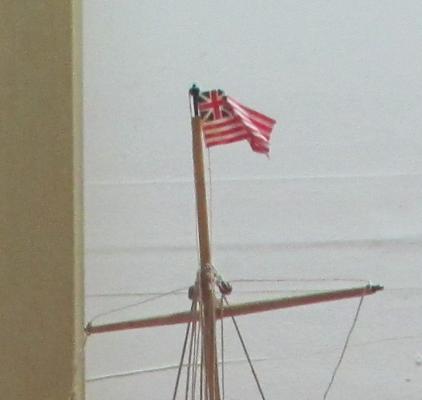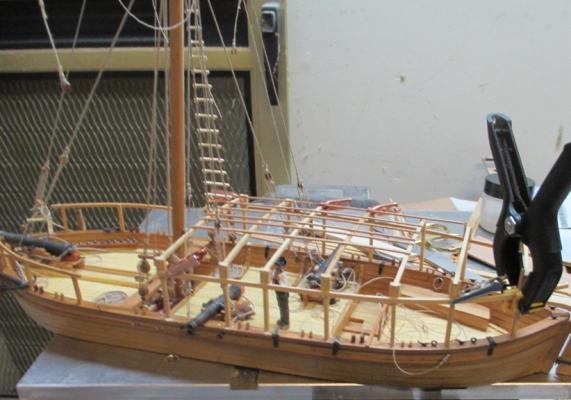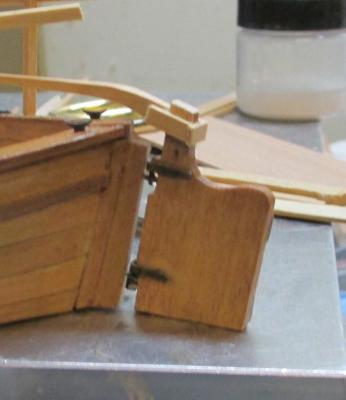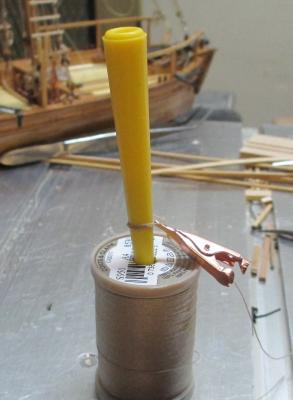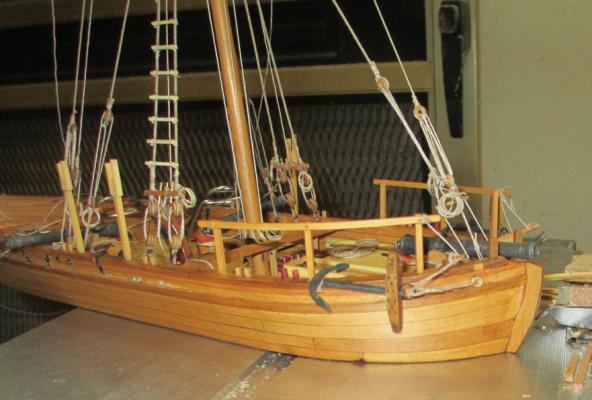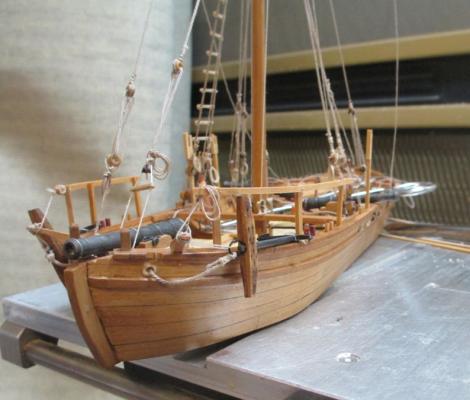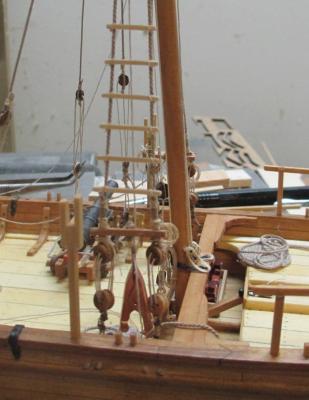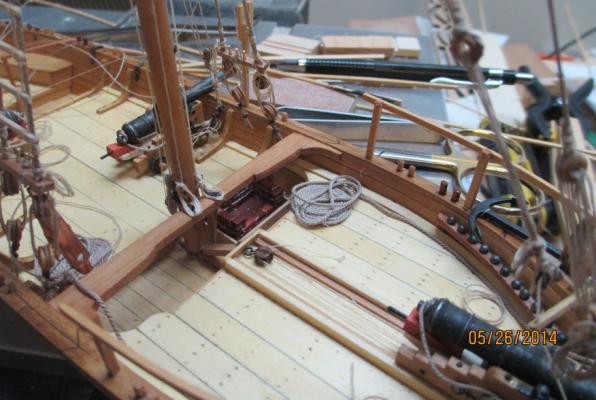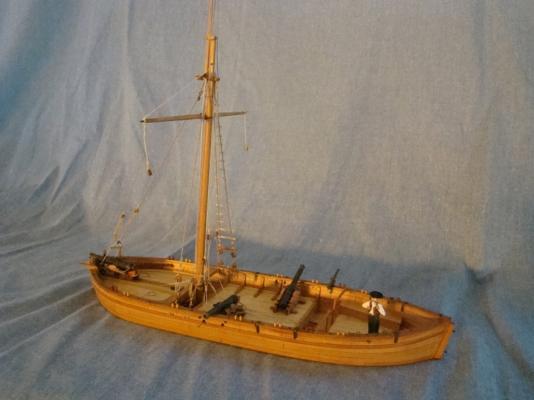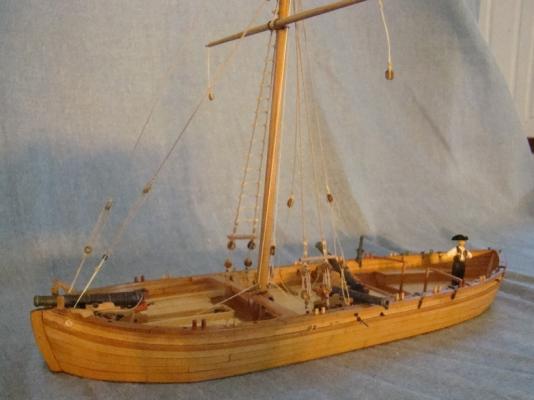-
Posts
1,876 -
Joined
-
Last visited
Content Type
Profiles
Forums
Gallery
Events
Everything posted by Chuck Seiler
-

Black Strake
Chuck Seiler replied to Chuck Seiler's topic in Building, Framing, Planking and plating a ships hull and deck
Thanks Chuck. -
Martin, When working in wood, virtually ALL mistakes can be corrected. Not a happy prospect, to be sure, but true. However, sometimes it takes skill and effort beyond the basic modeler (as well as extra pieces-parts). BUT...this is how you learn. As I tell people when I am demonstrating ship modeling, I have not made a model yet where I have not needed to pull it apart at some point. In my younger days, I would work around it and would settle for 'whatever'. Now I endeavour to fix it, before the error compounds. Mobbsie is correct. Post your build here and if there aer any issues you will get plenty of knowledgable feedback.
- 1,279 replies
-
- agamemnon
- caldercraft
-
(and 1 more)
Tagged with:
-
Pops, I now use Firefox as my browser and I have subsequently visited the site. I learned alot. Thanks for the complements. Mark, In fairness to the judge (who is the former curator of models at the San Diego Maritime Museum), it is a woodworking competition rather than a model competition. Scale models happens to be the category we were competing in. I will know more when I review the 'judges notes' next Sunday.
-

THE BLACKEN-IT TRIALS
Chuck Seiler replied to Erebus and Terror's topic in Metal Work, Soldering and Metal Fittings
I had the same thought as jud, is the acetone bath really necessary after the muriatic acid bath? -
Wee hours of the Morning, Thursday 29 May. 'Tis mere hours before I have to deliver the model to the County Fairgrounds. All nighters are not as easy as they used to be. Work on the awning structure is pretty much as complete as it is going to get. I still need to add the rolled up awning, sweep rack and sweeps, but that will have to wait until the Fair is over. Rigging is complete! Hoist the ensign and we sail into battle!!! <poop> No sail. We row into battle <poop> No sweeps. We get towed into battle...Call AAA. This page will be on hiatus until after July 4th, when I get PHILLY back. I will complete the model and get pics posted. My intent was to get a good set of shots prior to taking the model to the Fairgrounds from work....but I forgot my camera.
-
Was that Dave Yotter from the SMA? He has been building since....let's put it this way, it was going to be the 'admiralty model' used by General Arnold to show the workmen what he wanted built. I forget the exact scale, but it is 3 times my Philly, so, about 1/16 scale? He even cast his own cannons. He is using the plans from the Smithsonian. Its an interesting build with surprisingly alot of documentation.
-
Coil making jig. It wasn't so much the making of the coils, it was placing them that gave me problems. I think the resulting fiturative knots were way too big, but otherwise theywould have come undone...evenwith a soaking of diluted white glue. I will puruse the forum for better examples of doing this next time. Fortunately, this is a pretty simple rig. I can ony imagine a square rigger.
-
I grow weary of rope coils. Progress as of today. All the shrouds and stays are in place. Forward railings have been installed. Anchors installed and 'housed'. At this point not much going on aft of the starboard 9 pounder. Alot of rigging (for this model) andassociated rope coils. As I mentioned earlier (either here or elsewhere) as I was grappling with the crowded confines of the area below the mast,I realized I needed to rig the blocks, etc from the perspective of the folks on the ship,as opposed to the way it would be easier to do. I managed to snag existing rigging and rope coils on several occasons, but with minimal damage. A gander at the opertion from the port side. Note: The stock on the anchor is nailed together (simulated). Stairway to heaven...or at least to the topmast. When I was working on this, I mentioned to several fellow modelers that I was attaching the rungs to the shrouds. They felt compelled to correct me, "You mean ratlines?" "No, I mean rungs." This was only on oneside, for some reason. Perhaps they got as tired as I did working on it and gave up. Another view of the fore deck area. More rope coils. Anchor cable not so neatly coiled up on deck for folks to trip over.
-
Later that same night...... I thought I would post these, but later decided not to because I would have more up to date pics. <not> The build goes on at a fast pace, but the photgrapher appears to be on vacation. I hope to have some pictures later today if, for nothng else, to keep me off page 4. What started as a simple build has become quite cluttered. Alot of knots and alot of rope coils (non perfect version). While I am pressed for time, I need to remember to let the glue dry before moving on. Critical at this point isto remember to perspective of the rig. How would that block be rigged and how would that belaying pin be tied off by people ON the ship, not what is easy for a modeler OUTSIDE the ship. Thankfully I have a good supply of tweezers, forceps and mini alligator clamps. Film at 11.
-
I guess that's what happens when you slap a fleet together with what is available. I have similar issues with PHILADELPHIA that I will explain on my blog when I finally get my ducks in one sock. Long story short, there are alot of design flaws that make it look awkward. Somethng apparently as simple as not having enough ringbolts/eyebolts forces them to double up the use of several bolts causing non symetrical rigging and (in my mind) a less than crisp looking appearance. They didn't build the shils/fleet to make life easier for modelers...but it sure does make an interesting build. Great work so far Mike. I'll see you at Valcour.
- 175 replies
-
- washington
- galley
-
(and 1 more)
Tagged with:
-
One might say that it doesn't REALLY matter unless you are doing a diorama where all the facets of the model are set in a single moment in time. Otherwise, you may have various pieces of the model displayed in a manner inconsistent with how another part of it would be at the same time; elmtree pumps with the handles installed but nobody manning them, ditto windlasses, guns rigged for sea on one side and run out on the other. This is done to show off some of the features that might not normally be seen, since the model is a display, not a real. Line coiled on deck as if awaiting the admiral's inspection is not far fetch since the model is 'ready for inspection' by the public. I think any way is correct if that way would have been done at some point on the real ship.
-
I flew some Sailors in to square away the lubberly rigging. Here is where I am as of now. The swabbies thought the ladder rungs, in lieu of ratlines, were cute, so they left them on. Once I get the starboard gun installed, the rigging will go very fast. Once that is done, the forward railings and awning structure...as well as cats and dogs like anchors, rope coils, sweeps, etc. I had taken several pics during our Guild meeting Wednesday, but all except this ended up being out of focus. More pics this weekend...if I can see thru the smoke and ash.
About us
Modelshipworld - Advancing Ship Modeling through Research
SSL Secured
Your security is important for us so this Website is SSL-Secured
NRG Mailing Address
Nautical Research Guild
237 South Lincoln Street
Westmont IL, 60559-1917
Model Ship World ® and the MSW logo are Registered Trademarks, and belong to the Nautical Research Guild (United States Patent and Trademark Office: No. 6,929,264 & No. 6,929,274, registered Dec. 20, 2022)
Helpful Links
About the NRG
If you enjoy building ship models that are historically accurate as well as beautiful, then The Nautical Research Guild (NRG) is just right for you.
The Guild is a non-profit educational organization whose mission is to “Advance Ship Modeling Through Research”. We provide support to our members in their efforts to raise the quality of their model ships.
The Nautical Research Guild has published our world-renowned quarterly magazine, The Nautical Research Journal, since 1955. The pages of the Journal are full of articles by accomplished ship modelers who show you how they create those exquisite details on their models, and by maritime historians who show you the correct details to build. The Journal is available in both print and digital editions. Go to the NRG web site (www.thenrg.org) to download a complimentary digital copy of the Journal. The NRG also publishes plan sets, books and compilations of back issues of the Journal and the former Ships in Scale and Model Ship Builder magazines.


